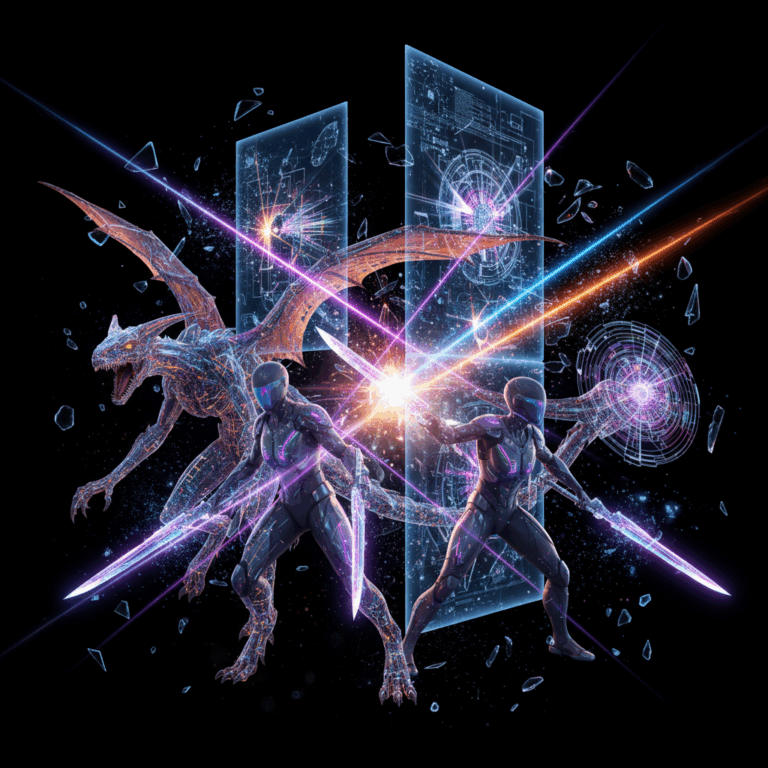Evolution of CGI in film
The use of CGI It has radically transformed cinema, allowing the creation of previously unimaginable worlds and characters. This technology has opened up a wide range of artistic and technical possibilities.
From its earliest applications to current innovations, CGI has evolved while maintaining the goal of improving immersion and realism in films, marking important milestones in the industry.
Major productions have used CGI to tell visually stunning stories, making the impossible possible on the big screen.
Revolutionary impact of Avatar and its technical advances
“Avatar” (2009) represented a turning point with its use of CGI, integrating the motion capture to translate the actors' expressions into digital characters with unprecedented detail.
This technology facilitated a total immersion in the world of Pandora, combining visual effects and technology to create stunning and emotionally believable scenes.
The sequel, “Avatar: The Sense of Water”, took the technique even further by developing underwater motion capture, setting a new technical standard in the industry.
Integration and improvement of CGI in landmark films
Films like "The Irishman" stood out for their advanced use of CGI for digital aging effects, managing to transform actors without losing naturalness.
On the other hand, "The Lord of the Rings" combined practical effects with CGI to bring creatures like Gollum, enhancing the narrative with a unique emotional impact.
Animations like “Spider-Man: Into the Spider-Verse” broke visual molds by merging 2D and 3D techniques, generating an innovative aesthetic that departs from traditional CGI.
Innovative techniques in special effects
Special effects techniques have advanced significantly, combining technologies to achieve more realistic and creative results. Advances in motion capture and digital simulation are key.
Furthermore, the integration of practical effects with CGI enhances visual authenticity, while advanced digital animation raises the level of detail and realism in productions.
These innovations allow filmmakers to tell stories with stunning visuals that uniquely capture the audience's attention and emotions.
Motion capture and digital simulation
Motion capture has revolutionized cinema by accurately recording every gesture and expression of the actors, transferring them to digital characters with great naturalness.
Movies like “Avatar” use this technique to achieve a detailed imitation that enhances the immersion and creates real emotions in computer-generated environments.
Digital simulation complements this technique, recreating complex effects such as particles, fluids, or destruction, enriching each scene with realistic movements.
Combination of practical effects with CGI
The fusion of practical effects with CGI offers a perfect balance between the tangible and the digital, making the scenes visually believable and palpable.
Great sagas like "The Lord of the Rings" demonstrated that the combination of models and digital effects creates fantastic worlds with details that impress the viewer.
This combination also helps to preserve authenticity in the performances and in the interaction with the environment, avoiding an artificial appearance.
Advanced digital animation and its realism
Digital animation uses sophisticated techniques to generate characters and settings with extremely realistic textures, movements, and lighting.
Examples like "The Lion King" show how digital modeling and advanced rendering achieve photorealistic effects that amaze audiences.
These techniques allow not only realism but also creative freedom that opens up new narrative and aesthetic possibilities in contemporary cinema.
CGI in diverse genres and styles
CGI has adapted to multiple genres, enriching everything from explosive action to more subtle and artistic narratives. Its versatility allows for the creation of stunning visual effects that captivate audiences.
In every cinematic style, CGI enhances visual storytelling and the immersive experience, opening new avenues for creativity and technological innovation in modern cinema.
Thanks to its ability to combine with other resources, CGI expands the boundaries of what is possible on the big screen, bringing realism and spectacularity to various productions.
Effects in superhero and action films
Superhero films have taken CGI to another level with colossal battles and characters impossible to create without digital technology. These movies rely heavily on visual effects for their success.
Productions like “Avengers: Endgame” allow for a huge number of characters on screen, recreating in detail movements and supernatural powers, achieving a stunning visual experience.
CGI also facilitates the digital reproduction of actors, as happened in "Avengers", allowing for homages and continuity beyond physical or temporal limitations.
Furthermore, in action films, CGI reinforces dangerous or impossible sequences, integrating with real scenes to maintain a high degree of realism and spectacularity.
Artistic and narrative use of CGI
Beyond spectacle, CGI is also used for narrative purposes, adding depth and visual identity to stories through subtle and symbolic effects.
Movies like "Matrix" use CGI to complement the plot, prioritizing real action but enriched by effects that expand its meaning and appeal.
In animation, such as "Spider-Man: Into the Spider-Verse," CGI becomes a visual language, merging styles to create an innovative aesthetic and unique narrative.
CGI as an expressive tool
CGI allows directors to explore imaginary worlds and abstract concepts, facilitating the visual representation of complex emotions or ideas.
Thanks to this, CGI not only serves to make images more realistic, but also to express artistically and tell stories in a more immersive and original way.
Future and potential of CGI in film
He CGI It continues to evolve rapidly, driving new ways of telling stories in film. Technical innovations promise to expand its creative possibilities even further.
Current trends point to integrating artificial intelligence and virtual reality to create immersive experiences, revolutionizing the way movies are produced and enjoyed.
The future of CGI in film is very promising, with increasingly detailed and realistic approaches that are transforming not only the aesthetics, but also the cinematic narrative.
Recent innovations and upcoming trends
The latest technologies in CGI They include artificial intelligence to improve textures and movements of digital characters, with increasingly precise results.
Advanced volumetric capture techniques are also being explored to film actors in real 3D, facilitating their integration into complex virtual worlds.
The next trends point to the fusion between augmented reality and CGI, offering new ways to interact with cinematic content in real time.
Expanding creative possibilities
Today, CGI is not just a technical tool, but an ally for artistic expression, allowing directors to explore unique visual universes and innovative styles.
This creative growth leads to experimenting with non-linear narratives and visual effects that defy the laws of physics, enriching the viewer's experience.
Furthermore, CGI promotes the inclusion of diverse characters and worlds that were previously impossible, democratizing imagination and innovation in today's cinema.






